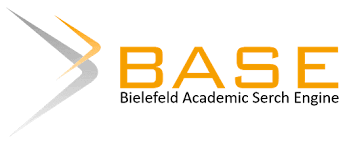IMPLEMETASI MANAJEMEN PENGETAHUAN SEBAGAI UPAYA PENGEMBANGAN LEMBAGA PENDIDIKAN UNGGUL PADA TK. WIDYA NUGRAHA BATUBULAN
Keywords:
alternative choices, educational institutions, knowledge managementAbstract
Along with the development and advancement of technology, the competition that occurs requires people to follow the flow of adjustment as well as the world of education which now provides many alternative choices and levels of quality. Educational institutions need to develop excellence in order to survive, compete and maintain the continuity of the institution properly. The resources needed to maintain the continuity of the institution are not solely from traditional resources but also must be from intangible resources, namely knowledge. To benefit from the knowledge possessed and what knowledge must be possessed, educational institutions must manage their knowledge through knowledge management. Educational institutions must consciously know the knowledge they have and their benefits to improve performance and increase innovation and creativity. To achieve superior educational institutions, knowledge management is needed, namely the ability to create and maintain value that is greater than the competitiveness of the core institution. Knowledge and experience are able to create, communicate and apply knowledge about various things to achieve organizational goals, namely to become a superior educational institution.
Downloads
References
Anis, M. (2011). Sistem Informasi Penjualan Batik Berbasis Web Pada Toko Batik Q-Ta Pekalongan. 1–18(maret).
Efraim, Turban, E. Aronson, J., E. Ting–Peng, L. Shardan R. (2007). Decision Support and Business Intelligence Systems. Prentice Hall.
Hakim, L. (2016). Pemerataan akses pendidikan bagi rakyat sesuai dengan amanat UndangUndang Nomor 20 Tahun 2003 tentang Sistem Pendidikan Nasional. EduTech: Jurnal Ilmu Pendidikan Dan Ilmu Sosial, 2(1), 53–64.
I Kadek Yogi Mayudana, I. K. S. (2020). Analisis Kebijakan Penyederhanaan RPP (Surat Edaran Menteri Pendidikan Dan Kebudayaan Nomor 14 Tahun 2019). IJED (Indonesian Journal of Educational Development), 1(1), 62–70. https://doi.org/10.5281/zenodo.3760682
I Komang Sukendra, I Made Darmada, P. D. F. (2019). Pengembangan Model Pembelajaran Berbasis ICT (Information Communication and Technology) Pada Revolusi Industri 4.0. Prosiding ICT IKIP Saraswati Tabanan, 7.
Joko Subagyo. (2011). Metode Penelitian Dalam Teori Dan Praktik. Jakarta: Rineka Cipta.
Moleong, Lexy J. (2005). Metodologi Penelitian Kualitatif. Penerbit : Remaja Rosdakarya.
Manado, C., & Ratulangi, U. S. (2016). Analisis Sistem Informasi Akuntansi Siklus Penjualan Dan Penerimaan Kas Untuk Meningkatkan Pengendalian Intern Pada Pt. Sumber Alfaria Trijaya, Tbk (Alfamart) Cabang Manado. Jurnal Berkala Ilmiah Efisiensi, 16(4), 191–202.
Noviana, LPR. Nugraha, INBS. Ambaradewi, NLG. (2022). Rancang Bangun Sistem Informasi Pembelajaran Di SMK Negeri 1 Tembuku Berbasis Web Journal INSERT (Information System and Emerging Technology Journal), 2(2), 59-69. https://doi.org/10.23887/insert.v2i2.36217
Ningky M. (2008) Knowledge Management Audit Penerbit PPM Jakarta
O’Brien, James A. (2005). Pengantar Sistem Informasi - Prespektif Bisnis dan Manajerial. Jakarta: Salemba Empat.
Sari, A. K. (2014). Analisis Karakteristik Gaya Belajar Vak(Visual, Auditorial, Kinestetik)Mahasiswa Pendidikan Informatika Angkatan 2014. Edutic - Scientific Journal of Informatics Education, 1(1), 1–12.
Sugiyono. (2014). Metode Penelitian Pendidikan Pendekatan Kuantitatif, Kualitatif, dan R&D. Bandung: Alfabeta.
Sukendra, P. D. F. (2021). Peningkatan Kualitas SDM Guru Melalui Pengembangan Pendidikan Menuju Era Society 5.0 (pp. 118–128). https://drive.google.com/file/d/1WiQoFgQQFplMbou3ZVtNqb45oO2YYyRN/view?usp=sharing
Downloads
Published
How to Cite
Issue
Section
License
Copyright (c) 2022 LP3M Universitas PGRI Mahadewa Indonesia

This work is licensed under a Creative Commons Attribution-NonCommercial-ShareAlike 4.0 International License.
Hak cipta mencakup hak eksklusif untuk mereproduksi dan mengirimkan artikel ini dalam semua bentuk dan media, termasuk mencetak ulang, memotret, mikrofilm dan reproduksi serupa lainnya, serta terjemahannya. Reproduksi dari bagian manapun dari jurnal ini, penyimpanannya di database dan transmisinya dengan bentuk atau media apa pun, seperti salinan elektronik, elektrostatik dan mekanis, fotokopi, rekaman, media magnetik, dan lain-lain, akan diizinkan hanya dengan izin tertulis dari penerbit jurnal.







1_(1).jpg)











